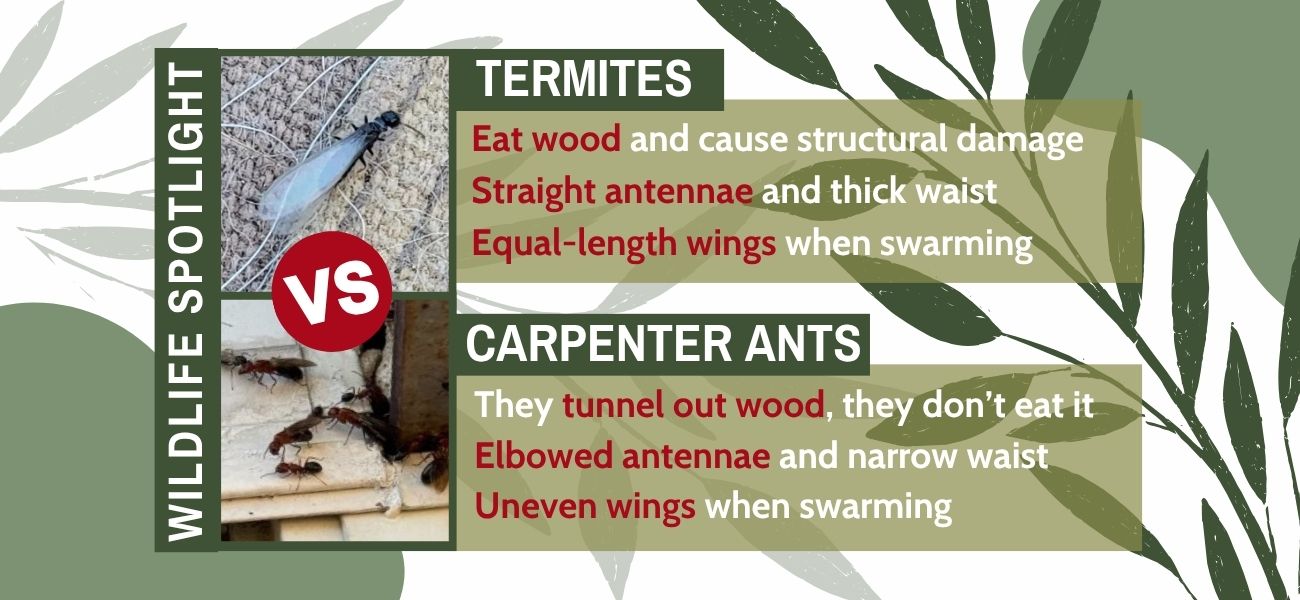Wildlife Spotlight: Carpenter Ants vs. Termites
Carpenter ants and termites are two of the most commonly confused pests — and in spring, when swarming season kicks off in North Texas, it gets even harder to tell them apart.
Both insects can show up suddenly. Both have wings. And both are often spotted near wood.
But when it comes to the type of damage they cause, they couldn’t be more different — and misidentifying them can lead to the wrong treatment plan, wasted time, and costly repairs.
Here’s how to tell which one you’re really dealing with.
What Carpenter Ants Do
Carpenter ants are large, dark-colored ants that make their nests in damp or damaged wood. Unlike termites, they don’t eat the wood — they chew through it to create smooth tunnels and galleries for their colonies.
They’re often found in:
Window frames, door casings, or wall voids
Hollow doors or damp attic beams
Exterior wood with moisture damage
Tree stumps or wooden fences
You may notice small piles of frass (sawdust-like shavings) near their nesting sites — a sign they’re carving space, not feeding.
What Termites Do
Termites, on the other hand, eat wood from the inside out. They feed on cellulose, the main structural component in wood, and can hollow out support beams, walls, and flooring without you knowing — until the damage is already extensive.
Termites don’t need moisture damage to move in. They’re drawn to:
Dry, sound wood
Subflooring and baseboards
Behind walls or under trim
Areas near the foundation
Unlike carpenter ants, termites leave behind mud tubes, wing fragments, or soft wood that sounds hollow when tapped.
How to Tell the Difference
While both pests may swarm in spring, there are key visual differences:
Carpenter ants have elbowed antennae and a pinched waist.
Termites have straight antennae and a thick, uniform body.
Carpenter ants have uneven wings (top pair longer).
Termites have four wings of equal length.
If you spot winged insects near windows, doors, or baseboards, don’t assume — a proper ID makes all the difference in your treatment options.
Why It Matters
Both pests are serious, but they require completely different treatments.
Termites need a trench and treat service with long-term chemical protection.
Carpenter ants may need direct void treatment, baiting, or exclusion to remove nesting access.
Misidentifying the problem can mean treating the wrong insect — and giving the real one more time to cause damage.
What To Do If You’re Not Sure
That’s where we come in.
Paragon Pest Control offers free inspections to identify what kind of pest is present — and whether it’s a wood-chewing ant, a wood-eating termite, or something else entirely.
We’ll give you real answers and the right next steps — no guessing, no wasted product, no stress.


